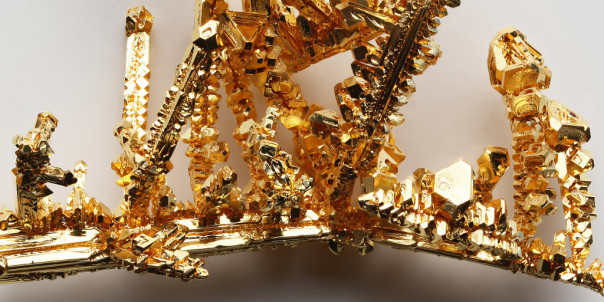Chrysopoeia is the artificial production of gold, long the goal of alchemists (particularly the transmutation of base metals, such as lead). Turning one element into another via chemical reactions is impossible, but it is possible using nuclear reactions.

Crystalline gold
Gold has only one stable isotope, gold-197, so any nuclear reaction aiming to produce gold must finish with producing gold-197. If your reaction produces another gold isotope, such as gold-196 or gold-198 this will decay over the course of a few days to form another element (platinum-196 or mercury-196 in the case of gold-196, and mercury-198 in the case of gold-198).
Producing gold from lead is impossible, but it is possible to turn mercury into gold. If mercury-196 (0.15% of natural mercury) is irradiated with slow neutrons it forms mercury-197 which then decays via electron capture to form stable gold-197. If mercury-198 (9.97% of natural mercury) is used instead, it can be irradiated with fast neutrons, causing it to lose a neutron and form mercury-197 and then gold-197 as above.
In 1980 Glenn Seaborg (after whom seaborgium is named) produced a tiny amount of gold (thousands of atoms) by bombarding bismuth-209 with carbon-12 and neon-20 atoms, but only formed radioactive isotopes of gold in the process.
Regardless of the method used, the production of gold in nuclear reactions is prohibitively expensive, costing many times the price of gold per unit mass produced.
Hello
Other sources do claim that it would be possible to turn lead into gold, although still at astronomical cost.